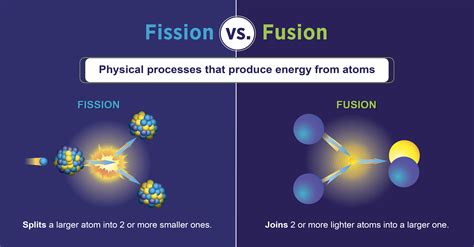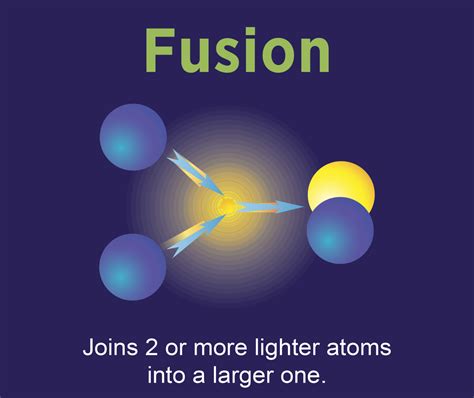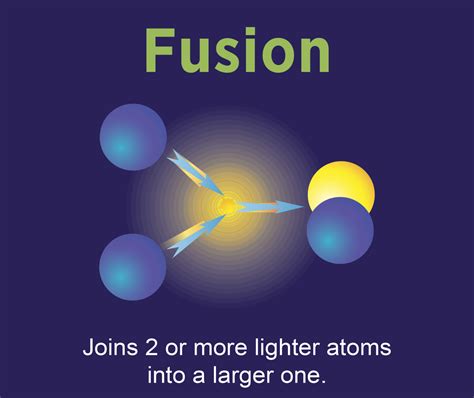Fusion power, the process of harnessing energy from the fusion of atomic nuclei, has been a subject of intense research and interest for decades. This clean and virtually limitless source of energy has the potential to revolutionize the way we generate power, mitigating our reliance on finite fossil fuels and reducing greenhouse gas emissions. As we delve into the realm of fusion power, it becomes evident that this technology is on the cusp of a breakthrough, with several promising approaches being explored. Here, we will examine five key facts about fusion power, highlighting its current state, potential benefits, and the challenges that lie ahead.
Key Points
- Fusion reactions have the potential to produce vast amounts of clean energy with minimal waste production.
- The most commonly researched fusion reaction involves the combination of deuterium and tritium isotopes.
- Achieving and sustaining the extremely high temperatures necessary for fusion to occur is a significant technological challenge.
- Several approaches to fusion, including tokamaks and stellarators, are being developed and tested worldwide.
- The first commercial fusion power plants could become operational in the mid-21st century, pending successful development and scaling of the technology.
Understanding Fusion Reactions

Fusion reactions involve the combination of two or more atomic nuclei to form a single, heavier nucleus. This process releases a significant amount of energy, which can be harnessed to generate electricity. The most commonly researched fusion reaction is the deuterium-tritium (D-T) reaction, where an isotope of hydrogen (deuterium) and an isotope of helium (tritium) are fused to form helium and a high-energy neutron. This reaction is favored due to its relatively low energy threshold and high energy yield.
Challenges in Achieving Fusion
One of the primary challenges in achieving controlled fusion is creating and sustaining the extremely high temperatures necessary for the reaction to occur. Fusion requires temperatures of approximately 150 million degrees Celsius, which is about ten times hotter than the core of the Sun. Achieving and maintaining such high temperatures in a controlled environment is a significant technological challenge. Additionally, the plasma (ionized gas) in which the fusion reactions occur must be confined and stabilized to allow the reaction to proceed efficiently.
| Category | Description | Challenges |
|---|---|---|
| Temperature | Must be extremely high (about 150 million degrees Celsius) | Heating and sustaining such high temperatures |
| Confinement | Plasma must be confined to allow reactions to occur efficiently | Stabilizing the plasma and maintaining confinement |
| Materials | Materials used in the reactor must withstand extreme conditions | Developing materials that can resist radiation damage and extreme temperatures |

Approaches to Fusion

Several approaches are being explored to achieve controlled fusion, including tokamaks and stellarators. Tokamaks, such as the International Thermonuclear Experimental Reactor (ITER), use a toroidal (doughnut-shaped) vessel to confine the plasma in a strong magnetic field. Stellarators, on the other hand, use a twisted, three-dimensional magnetic field to confine the plasma. Each approach has its advantages and challenges, and ongoing research is aimed at determining the most effective and efficient method for achieving controlled fusion.
Future Prospects and Challenges
Despite the challenges, significant progress has been made in fusion research, and several promising projects are underway. The achievement of first plasma in ITER, for example, marks a major milestone in the development of fusion technology. However, scaling up the technology to commercial levels while ensuring safety, efficiency, and cost-effectiveness remains a significant challenge. The first commercial fusion power plants could become operational in the mid-21st century, pending successful development and scaling of the technology.
What are the primary benefits of fusion power?
+Fusion power offers several benefits, including zero greenhouse gas emissions, minimal waste production, and a virtually limitless fuel supply. Additionally, fusion reactions can produce a significant amount of energy from a small amount of fuel, making it a highly efficient source of power.
What are the main challenges in developing fusion power?
+The main challenges in developing fusion power include achieving and sustaining the extremely high temperatures necessary for fusion reactions, confining and stabilizing the plasma, and developing materials that can withstand the extreme conditions inside a fusion reactor.
When can we expect the first commercial fusion power plants to become operational?
+Pending successful development and scaling of the technology, the first commercial fusion power plants could become operational in the mid-21st century. However, this timeline is subject to change based on the progress of ongoing research and development efforts.



